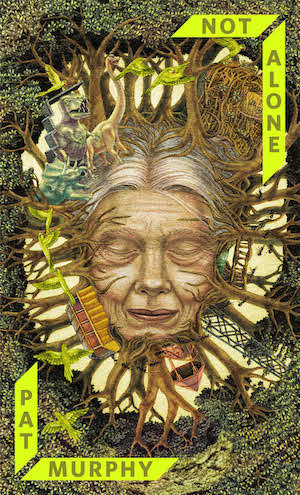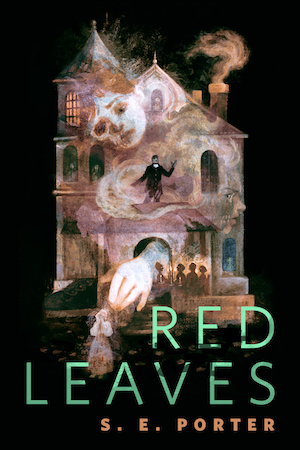David Lynch is no longer with us. David Lynch the filmmaker will always be with us, of course. After all, the films are still here—on our shelves, on (some) streaming services, and in rep houses across the world—and always will be.
But what we have lost is David Lynch as a daily presence in our world. I mourn waking up knowing that he’s not inhabiting the same planet I’m on, puttering around in weathered black clothes, drinking damn fine coffee, looking for a way to make each day more creative than the one before it. I’m not sure what a world without David Lynch feels like. It’s been two weeks and I’m still trying to take the temperature.
I didn’t make up this image of Lynch—he literally showed it to me, to all of us, day after day. In our homes, on our phones, anywhere we could get a signal—we saw David Lynch being David Lynch. Over the last 20 years, David Lynch became an internet celebrity, first through his pioneering DavidLynch.com and then through the David Lynch Theater on YouTube. When most artists of his age and status would only appear online in an article lambasting the tyranny of Content, Lynch became a daily presence online, using digital technology to deepen and extend his pursuit of what he called “The Art Life.” Even though he didn’t release a new feature film during this period (though Inland Empire is in some ways a mixtape of some of his early internet material), Lynch was at his most prolific in this online century, making videos that showed us what we was working on, premiering new material, offering small tutorials, picking a number for the day, and talking about, of all things, the weather.
It’s those weather reports that became the most beloved of his online work and the things that made him a social media superstar in his 70s. It may sound odd to say this, but I don’t think that anything else Lynch did captures everything that made his work weird, wonderful, and transcendent. We can endlessly debate Blue Velvet vs. Mulholland Drive vs. Fire Walk with Me, but in doing that we’re overlooking some of his most profound (and abundant) work that surrounds us like air.
On the surface, Lynch’s daily weather reports may seem like a silly (and savvy) thing he did to promote his brand in the Age of Content, but in reality they’re so much more than that. Think about his weather reports for more than a few minutes, and it becomes clear that they contain everything essential to his art and are as representative an expression of his style and sensibility as Blue Velvet or Twin Peaks. Those little two-minute narratives offer a key to understanding his work and how it opens up “room to dream.”
While I think most people are familiar with the COVID-era weather reports he posted to his YouTube channel, Lynch started doing a version of the reports back in 2005, for Joe Escalante’s morning show on the L.A. radio station Indie 103.1. Lynch was one of a coterie of guests Escalante would have call in to report on various things: Surf Junkie Jeff would call in with the surf report, Escalante would call Timothy Olyphant to have him read the LA Times sports page, and David Lynch would leave a voicemail detailing the weather. These weather reports more or less followed the same format as the COVID-era YouTube videos: he’d say the date—always the month and day followed by “and it’s a [day of the week]”—describe the weather in Los Angeles with a “Here in L.A. …”—the sky, the clouds, the sun, the temperature in Fahrenheit and Celsius—and close with a “thought for the day,” which was usually a single word that always made me think of the “plastics” scene in The Graduate.
Like everyone else, my first impression was the most obvious: Lynch doing a daily weather report for a city whose weather is virtually the same 320 days out of the year is a goofy bit, and that’s why I loved listening to them at first. It was just funny to hear him proclaim, day after day, that we were due for another day of “BLUE skies” and “GOLDen SUNshine.” It felt like the most Lynchian thing ever: an ironic sendup of sameness.
But that was before I realized Lynch was no mere ironist. And it was also before a really strange thing happened and unlocked the whole project to me. His weather reports suddenly stopped matching the Los Angeles weather. Suddenly, he was reporting freezing temperatures, gray skies, and wet conditions. My wife and I would look at each other as we drove to work: what was going on? After we saw his final feature film Inland Empire, we figured out that he was calling in from Poland, where he shot some sequences for that film. But the only clue you’d get that he was not doing the weather in L.A. came when he began with the phrase “Where I am …”
This disconnect opened these weather reports up for me: they were no longer just a goof. These things were are tightly constructed and fully imagined as his other short works such as Six Men Getting Sick or Premonitions Following an Evil Deed. The man whose work continually defies description had just distilled his work into a single minute.
In withholding what city he was giving the weather for, in keeping things simply to “where I am,” Lynch did what every great artist does: he asked us to get inside his head, to see the world as he saw it from where he was, not where we were.
Calling in the weather from Poland to a radio station in Los Angeles created a rift in the reality of an L.A. listener, a sense that something was not quite right in the world. This snapped me awake and got me to look at the weather around me differently. To see it for the first time. Simply put, he made the Los Angeles weather weird in exactly the same way that the opening to Blue Velvet makes picture-perfect Norman Rockwell Americana weird and terrifying. We see those beetles writhing beneath the red roses, white fences, and blue skies of a fantasy America and we realize not just that there’s a hidden darkness to things but that this darkness is inextricable from the bright fantasy, that the fantasy is literally growing out of those murky, menacing blacks. And that’s when we discover that all that trouble we try to keep at bay is actually inescapable. It’s never away; it’s always here, now. It’s Frank Booth staring back at us, taking a huge pull off his nitrous tank and exclaiming “You’re like me!”
But then I realized something even more important: I didn’t need an incongruous weather report to make the L.A. weather weird. The L.A. weather was already weird. Blue skies and golden sunshine every day? Am I dreaming? Is this really a new day? Did it look exactly like this yesterday? Where am I? I only thought Lynch was telling me about the weather in some far-off place, only to discover that his report was closer to home than I could have possibly imagined.
It’s this twist, to me, that is the real magic trick that David Lynch pulls in all his work. It’s easy to make something weird look weird or to make an ironic joke about something banal. It’s something different to sincerely express amazement over something banal, or to make a normal thing look so weird that one realizes it was weird to think it was normal to begin with. In this respect, his weather reports may be his most radical, magical work because they instill a sense of wonder in something that we have long assumed to be devoid of wonder: talking about the weather.
When he resurrected his weather reports on his YouTube channel after the onset of the Covid-19 pandemic, Lynch revised the “thought for the day” from his Indie 103.1 days and closed his videos with what he was “thinking about” that day. Instead of leaving us with a single abstract word, he’d take a moment to remember someone who had passed away or wish us luck with our creative work, but more often than not, he’d talk about a song. Some of these songs are familiar and expected because Lynch has either used them explicitly in his films, such as Gene Vincent’s “Be-Bop-a-Lula,” or because his films used other songs in the same style, such as girl groups like the Shangri-Las. Other times they’d be delightful surprises like when Lynch revealed on December 2, 2021, that he was thinking about “Lana Del Rey and her song ‘Video Games’ from 2011.’” (If you want a complete list, there are lots like this one online.)
This addition introduced another aspect of Lynch’s work previously missing from the weather reports: music. Not just music, but a certain approach to music that I think is unique to Lynch. Music isn’t just something that appears often in Lynch’s work: it’s integral to how his films work. His narratives lean on the logic of songs, harness their energy, and speak with them, even in scenes without music. Just as “where I am …” unlocks the surreal invitation of Lynchian weather, a simple clause reveals everything here. Notice how Lynch doesn’t say “today I’m listening to” Lana Del Rey. He’s “thinking about” Lana Del Rey. It’s a seemingly insignificant difference, but to me, it’s the whole Lynchian ball game.
By saying he’s “thinking about” a song rather than “listening to” it, Lynch demonstrates how songs (and, by extension, all works of art) operate in our lives. They are not simply things we read or listen to but rather things that we think about and live with, even when we are not reading or listening to them. Thinking about the song changes the weather. And it impacts the things we do. Others may not notice it, but if we’re tuned into the right frequencies, if we’re thinking in the right way, we can hear the song in the poem, see the painting in the film, read the book in the sculpture. Such is simply the way that we live in a media-saturated world.
Lynch himself said “people are like radios. They pick up signals,” and it’s the truth. Like Lynch, we cannot help but pick up the signals all around us and find them incorporated into our own output. His weather reports help to make us aware of the signals coursing all around us and his daily practice models for us a way of looking at the world with a perpetual sense of wonder.
Looking at the weather reports in this way makes clear how a sense of wonder permeates all his work. In moments of transcendence, there’s wonder. In moments of terror and trauma, there’s wonder. Even in the dullest moments like an old man on a lawnmower in The Straight Story, there’s wonder.Where everyone else saw a mundanity so pervasive that it didn’t bear noticing, Lynch saw wonder.
As Jeffrey remarks in Blue Velvet, “it’s a strange world, isn’t it?” And while we might think that the strangeness of Blue Velvet is the seedy underbelly of Lumberton or the menace of Frank Booth, the film doesn’t limit the strangeness to just that. It’s all strange, right down to the white picket fences and Formica countertops. And wonderful too. What Lynch’s weather reports and films show us is how everything can become strange if we greet the world with an unwavering sense of wonder and acceptance. When we do that, anything is possible, even the return of the robins or a visit from Glinda the Good Witch.
We haven’t had Lynch’s daily doses of wonder for a while now, and we’re not going to have any more. Instead, it’s up to us to find the wonder ourselves and recognize that it’s a strange world, and a beautiful one at that, all blue skies and golden sunshine.
Buy the Book


David Lynch’s American Dreamscape











I have always had a fondness for all things meteorological.
Skilling had the best graphics—and AM Weather’s Carl Weiss had me cracking up the way he would describe “small craft advisories.”
The Weather Channel was a mushy middle—and now local meteorologists nationwide have been axed from Allen…and I fear something like the old Santorum Accuweather Bill might return.
America lost another iconoclast, former Storm Chaser and researcher Chuck Doswell.
There is a delightful photograph of him on a chair with a table out in the middle of a field.
They would have loved one another.
I’d like to think the two are flitting between worlds.
I’d like to think that….